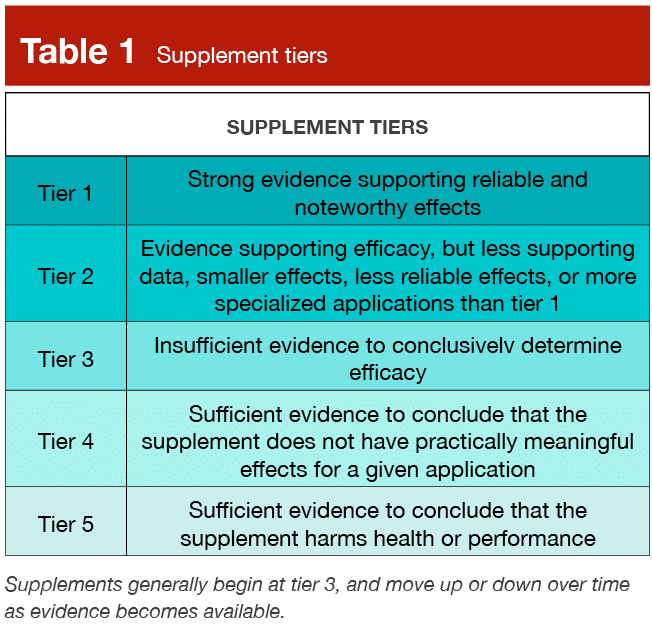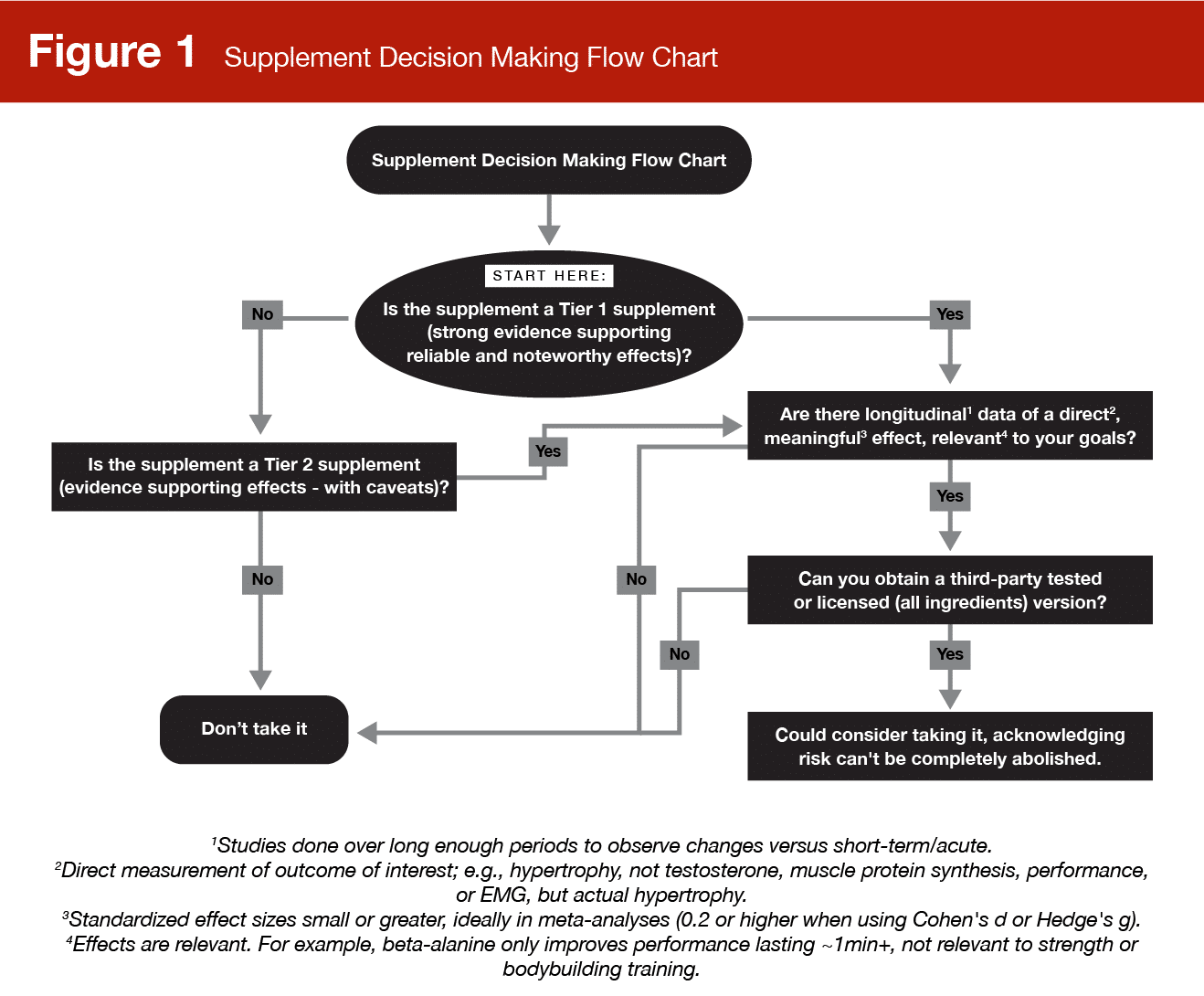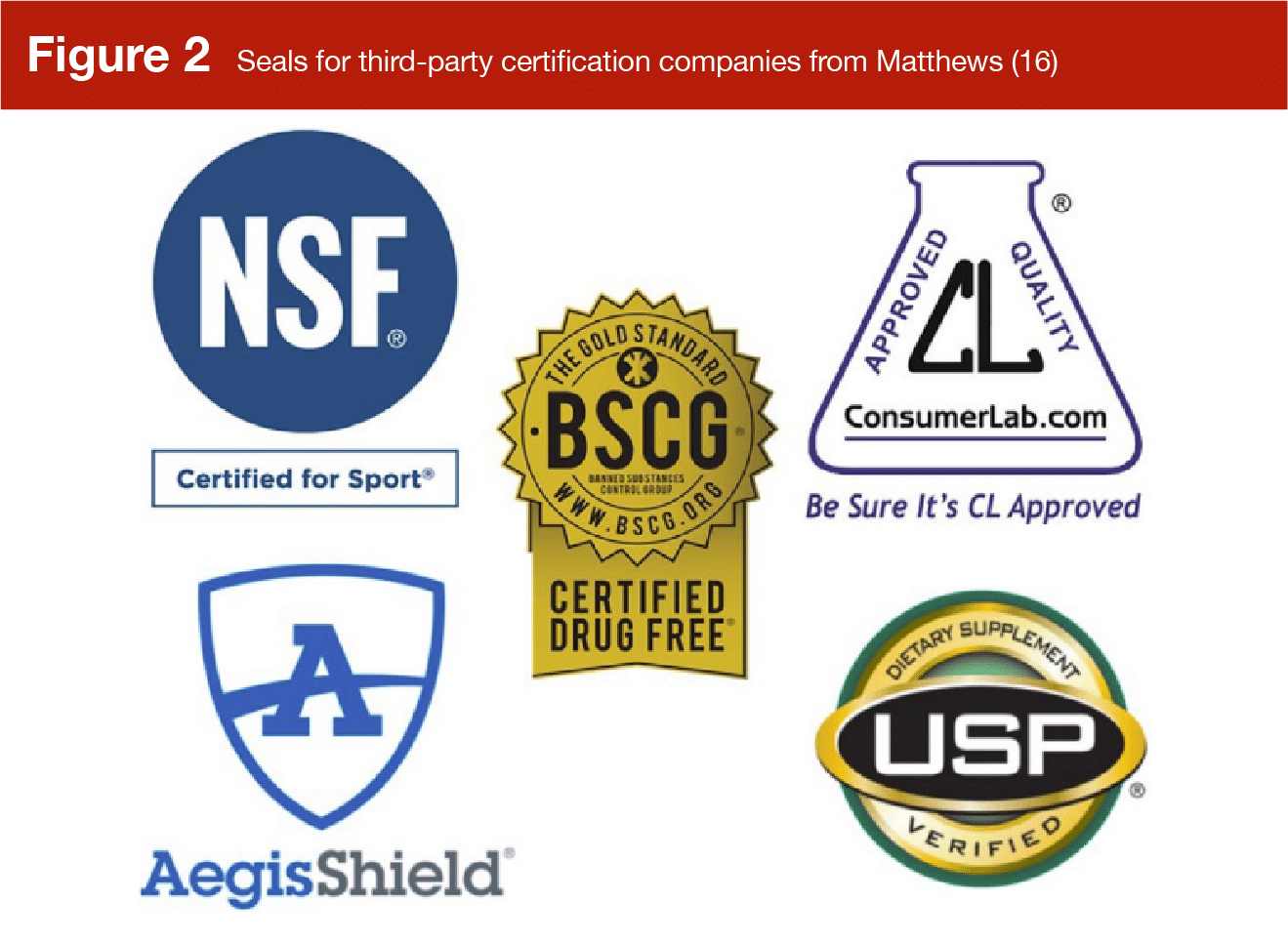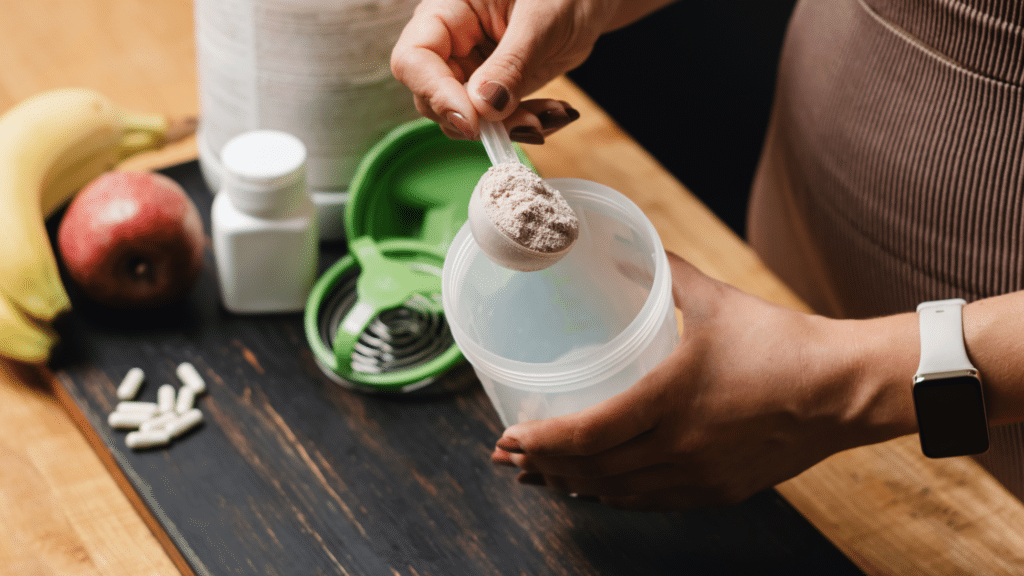Notice: This text was the MASS Analysis Evaluation cowl story for March 2024 and is a part of their “From the Mailbag” collection of articles. If you’d like extra content material like this, subscribe to MASS.
Discussing “impartial to optimistic” scientific findings is a meme in evidence-based circles at this level. With the large rocks of progressive overload, an applicable diet plan, and a way of life and surroundings conducive to restoration and adherence in place, any small rocks you add on prime can solely have a lot of an influence. Subsequently, it’s best to think about the time, power, and monetary price of investing in any of those small rocks. This resolution making course of differs by circumstance. Folks with the posh of creating their very own schedule would possibly resolve to separate their coaching quantity into two-a-day sessions in an try to probably enhance restoration and effectivity. Likewise, a powerlifter who needs to extra exactly autoregulate load choice would possibly put money into a linear place transducer to track velocity. Or, a much more frequent prevalence, a lifter with disposable revenue would possibly strive a Tier 2 or Tier 3 complement as beforehand delineated by Dr. Trexler (Desk 1).

In every case the fee funding is deemed well worth the potential upside, and for that cause, most view the three examples I gave in an identical mild. Nonetheless, on this article I’ll clarify why the everyday complement shopper is just not precisely weighing the true potential price of complement funding.
Weighing the Possible Profit
The record of dietary supplements thought of “evidence-based” has modified so much within the ~20 years I’ve been within the sport, and largely not in a optimistic method. So far, I agree with Dr. Trexler that for muscle constructing, creatine stays the one Tier 1 complement. Others had the potential for being on this class previously, however have been both banned as a consequence of antagonistic occasions or as a result of they have been truly launched to the market illegally. Nonetheless, as I write this text, creatine is the one Tier 1 complement. However, I keep in mind getting the “Sports Nutrition Review – The Latest Research on Performance Nutrition” information revealed within the mid 2000’s, proper once I began lifting. The information was cleverly written by EAS, a complement firm, as a textbook on sports activities diet with a give attention to dietary supplements. Just a few years prior, a meta-analysis on muscle constructing dietary supplements was revealed concluding that amongst all of the dietary supplements it assessed, solely HMB and creatine produced important enhancements in lean mass (1). Thus, within the information, HMB was heralded as the subsequent creatine, and extremely really useful (unsurprisingly, EAS bought HMB). However as extra information emerged, even with makes an attempt to enhance bioavailability, it became clear that HMB’s results – particularly within the context of a high-protein weight loss plan – have been overblown and its inventory has fallen to Tier 4. Likewise, in 2009-2015, BCAAs have been all of the evidence-based rage with bodybuilders taking them as usually as creatine (2) in an try to get across the supposed, pesky muscle protein synthesis refractory response from their final meal. As soon as once more, it turned obvious BCAA’s effects were overblown (once more, within the context of a high-protein protein weight loss plan), and it too plummeted into the more and more well-populated fourth Tier. Quick ahead to in the present day and there are scores of dietary supplements within the mass grave of Tier 4, whereas only a handful climbed from Tier 3 to 2 (like beta-alanine or citrulline). Much more regarding, in an effort to get himself canceled each last year and last issue, Dr. Trexler took photographs on the perennial Tier 2 champion, caffeine – seemingly completely damaging its petition for Tier 1 standing.
So, whereas the #evidence-based complement record adjustments, that’s largely as a consequence of Tier 3 dietary supplements and dietary supplements thought to be in Tier 2 falling from grace, whereas creatine stands alone on the prime in Tier 1 (possibly there can only be one Tier 1 complement). That means, the probability of any new complement attaining Tier 2 standing is low, and the probability of attaining and sustaining Tier 1 standing – whereas definitely attainable – is so low that it hasn’t occurred since creatine first turned commercially obtainable simply over 30 years in the past.
Talking of creatine, it’s essential to quantify the profit that even the heaviest hitting complement delivers since we’re weighing the potential upside from taking an opportunity – even an outdoor one – on a brand new complement turning into the subsequent creatine. In yet one more try to get himself canceled, Dr. Trexler explained that whereas lean mass positive aspects from taking creatine are “small to average” as measured by 2-4 compartment physique composition analyses compared to placebos (3), the consequences are solely “trivial to small” when assessing hypertrophy immediately by way of ultrasound, computed tomography, or MRI (4). Likewise, the consequences on power – relying on whether or not you check free weight or machine higher or decrease physique power – additionally fall within the trivial to average vary (5, 6). Lastly, based mostly on creatine’s mechanism of motion (MASS Video), it won’t provide you with a sustained enhance within the price of positive aspects you make. Quite, it’d present a one-time increase as you enhance from regular muscle creatine ranges to maximal. In different phrases, creatine may be extra like a one-time deposit than an funding with compound curiosity. Experientially, this all signifies that within the first week or month (relying on whether or not you load or take a relentless dose) of taking creatine, you’ll in all probability see your scale-weight enhance 1-2kg with no noticeable enhance in physique fats and spot will increase in power, energy, and muscular endurance at sooner charges than you usually expertise. However, you in all probability received’t discover a visual change in muscularity, with all else equal.
To conclude, I can’t say {that a} complement higher than creatine received’t come out and stay obtainable, but it surely hasn’t in over 30 years. Subsequently, it’s not unreasonable to set the highest attainable expectations of what a complement can do for you at someplace across the similar magnitudes of impact that creatine gives – a mix of results, a lot of which aren’t noticeable and the perfect of that are modest. Additional, this expectation ought to include the understanding that 1) no (authorized) complement has but achieved this feat, 2) just a few even present a measurable impact smaller than creatine’s, and three) far and away the best probability prevalence is that any new complement you buy is almost certainly to offer no impact in any respect.
Weighing the Possible Hurt
As acknowledged, I feel most individuals view the one possible “hurt” of taking a complement because the monetary price. In comparison with different diet interventions with potential upsides, taking a complement appears simpler. For instance, when you habitually eat ~1.4g/kg of protein inconsistently unfold throughout 2-3 meals per day with most of your protein coming at dinner, and much much less at lunch and your sometimes-skipped breakfast, you would possibly get some marginal advantages from consuming a bit extra protein and spreading it comparatively evenly throughout 3-4 meals. Nonetheless, adopting this new dietary sample would possibly take a number of effort, whereas merely taking a complement is relatively straightforward. Additional, identical to shopping for a complement, it’s costly to extend your protein consumption. When evaluating the “harms” of those methods, you’ve obtained an intervention with a monetary price and virtually no life friction, and an intervention with a monetary price and substantial life friction. Thus, I get why individuals purchase dietary supplements, even after they have low expectations concerning their profit.
However that comparability doesn’t inform the entire story, particularly for drug-tested athletes. Having been across the pure lifting scene as a coach, competitor, spectator, and volunteer for years, I can inform you the most typical factor a lifter says after they fail a drug check is that they completely weren’t deliberately doping – it should have been a tainted complement. Look no additional than the feedback part on any social media platform the place this declare is made, and also you’ll see 90% of the feedback are a tackle “suuuuure your multivitamin had d-bol in it, cheater!” Whereas these posts would possibly simply look like injury management, way more of them are as a consequence of authentic complement contamination than most notice. In an evaluation of 18 years of doping management case information in Norway from 2003-2020 (7), 26% of athletes with an antagonistic discovering claimed the supply of the banned substance was as a consequence of complement use. This preliminary statistic alone provides me pause; it’s one factor to assert on Instagram {that a} banned substance made you fail a drug check, it’s a distinct factor totally to make this declare in a doping tribunal. This protection comes at a considerable private monetary price for authorized illustration and drug-testing your dietary supplements, and also you want the foresight to save lots of a adequate quantity of your dietary supplements for testing. Provided that actuality, the truth that roughly half the athletes making this declare have been in a position to present proof in help of this protection is sobering. Which means that in all probability at the very least half of athletes who declare a complement prompted their drug testing failure at doping tribunals are telling the reality.
You would possibly marvel, why is that this taking place at such excessive charges? One potential cause is that in contrast to the method for pharmaceutical drug approval, which takes years of medical trials that transfer from mechanistic, to animal, to human fashions to indicate efficacy and security, in lots of international locations – including the US – dietary supplements are regulated after the very fact. That means, a regulatory company solely acts if antagonistic occasions are reported by customers or if unbiased assessments from customers or shopper safety organizations are publicized demonstrating inaccurate label claims. Relating to the direct, sensible causes for complement contamination, sadly there are lots of (8). These causes embody intentional and unintentional mislabelling by the complement firm itself, or the usage of lesser identified chemical synonyms of a banned substance to keep away from shopper or regulatory consciousness of its inclusion. Likewise, contamination can happen a step up within the provide chain by the producer with out the complement firm’s consciousness. This happens as a consequence of improperly cleaned gear, transportation vessels, or storage containers. Moreover, as a result of growing precision of anti-doping assessments, even minor contamination, far beneath what would produce a physiological impact, may end up in an antagonistic drug check discovering.
The historical past of the complement trade can inform simply how staggering the prevalence of banned substance contamination might be. In 2004, on the top of the prohormone period, the US instituted the Anabolic Steroid Control Act. This act amended the present legal guidelines to redefine “anabolic steroid” to imply any drug or hormonal substance, chemically and pharmacologically associated to testosterone, largely in an effort to cease the inclusion of designer steroids and artificial testosterone derivatives from being included in over-the-counter dietary supplements. In 2004, Geyer and colleagues (9) analyzed 634 non-hormonal dietary supplements from 215 firms throughout 15 international locations. As an entire, 94 or 14.8% of the merchandise contained unlabelled anabolic steroids. When analyzing solely dietary supplements bought from firms that additionally bought hormonal merchandise, 21.1% of the dietary supplements examined optimistic. When assessing solely the businesses that did not promote hormonal merchandise, 9.6% of the merchandise nonetheless examined optimistic. Whereas this determine is decrease, it signifies that even a comparatively discerning buyer who solely purchased non-hormonal merchandise from firms that didn’t promote hormonal merchandise had a 1 in 10 probability of inadvertently consuming anabolic steroids within the early to mid 2000s. Luckily, by 2007 the quantity of anabolic steroid contamination decreased radically, falling to simply 0.7% of 597 examined merchandise (8). Presumably, this lower occurred as a result of worry of or precise enforcement of the 2004 act, spurred on by the political local weather, which included a extremely publicized steroid hearing the place many outstanding baseball gamers have been questioned about PED use in entrance of congress. Nonetheless, basic change had not occurred within the complement trade. Comparable parallels exist in the present day. Chances are you’ll concentrate on the general public situations of over-the-counter pre-workouts containing amphetamines like DMAA or different amphetamine analogues which peaked ~10 years in the past, or the newer incidents of SARMs present in muscle-building dietary supplements. To offer particular numbers, USADA reported 100 optimistic WADA findings for the SARM ostarine between 2015-2017 and in a 2017 evaluation, Yun and colleagues discovered that 10 or 9.1% of 110 dietary supplements marketed for weight-loss, fat-burning, power, or efficiency enhancement bought on-line between 2015-2016 contained unlawful stimulants (10).
Sadly, even when you’re not a drug-tested athlete, there may be trigger for concern when you merely wish to take protected and efficient dietary supplements. A broader take a look at the US complement trade reveals that in a consultant pattern, 70% of producers didn’t meet the overall manufacturing practices required (however once more, not proactively regulated or enforced) as outlined in a 2013 report (11) by the US Meals and Drug Administration (FDA). When wanting particularly at dietary supplements the FDA recognized as contaminated from 2007-2016, the vary of contaminants was broad, together with all the pieces from antidepressants, to laxatives, to erectile dysfunction medicine and generally these have been older medicine now not prescribed as a consequence of security considerations (12). Assessing the complete scope of the difficulty is difficult, however in a story evaluation revealed final yr, the authors concluded that multi-ingredient pre-workout dietary supplements and dietary supplements marketed as anabolic, performance-enhancing, weight-reducing, or fat-burning have the best prevalence of contamination, and that someplace between 10-30% of all dietary supplements are contaminated (13). In the end, whether or not you might be involved concerning the security, efficacy, or presence of banned substances in dietary supplements, the information point out there may be substantial trigger for concern.
What You Ought to Do
Given the entire above, I’ve made an easy resolution making flowchart for whether or not to take any complement (Determine 1). The method consists of figuring out whether or not the complement has an impact, whether or not the impact is related and significant, and whether or not you may mitigate danger.


In the event you resolve to take a complement there are two pathways to mitigate danger. The primary you might need heard of: third-party testing. That is when a “third-party” – an unbiased firm – is employed by the complement firm to validate that the required manufacturing practices are adopted and/or to check batches of the product. The specifics differ by group and program, however you may examine this course of in an open access evaluation by Matthews (11) and we’ve recreated one among their figures displaying the extra well-known third-party seals of approval (Determine 2).


The second pathway to risk-mitigation, which I realized about by way of conversations with my colleague Ben Esgro, is searching for out licensed variations of particular elements. For instance, Creapure® or CarnoSyn® are B to B (enterprise to enterprise) firms that license their product to complement firms to promote, based mostly on their particular creatine and beta alanine manufacturing processes, respectively. These firms stake their fame on their product’s excessive efficiency and purity and as such, carry out rigorous in-house and third-party testing. Complement firms with bigger budgets generally outsource manufacturing for these elements by way of licensing. Importantly, simply because one ingredient in a multi-ingredient complement is licensed, that doesn’t assure the protection of your entire complement. This pathway to risk-mitigation solely applies to single-ingredient merchandise.
In the end, the choice to make use of a complement is as much as you. However, it’s my honest hope that you may now make an knowledgeable selection armed with the entire info offered on this article.
Get extra articles like this
This text was the quilt story for the March 2024 problem of MASS Analysis Evaluation. In the event you’d wish to learn the complete March problem (and dive into the MASS archives), you may subscribe to MASS here.
Subscribers get a brand new version of MASS every month. Every problem contains analysis evaluation articles, video shows, and audio summaries. PDF points are often round 100 pages lengthy.
References
- Nissen SL, Sharp RL. Effect of dietary supplements on lean mass and strength gains with resistance exercise: a meta-analysis. J Appl Physiol (1985). 2003 Feb;94(2):651-9.
- Hackett DA, Johnson NA, Chow CM. Training practices and ergogenic aids used by male bodybuilders. J Energy Cond Res. 2013 Jun;27(6):1609-17.
- Department JD. Effect of creatine supplementation on body composition and performance: a meta-analysis. Int J Sport Nutr Exerc Metab. 2003 Jun;13(2):198-226.
- Burke R, Piñero A, Coleman M, Mohan A, Sapuppo M, Augustin F, et al. The Effects of Creatine Supplementation Combined with Resistance Training on Regional Measures of Muscle Hypertrophy: A Systematic Review with Meta-Analysis. Vitamins. 2023 Apr 28;15(9):2116.
- Lanhers C, Pereira B, Naughton G, Trousselard M, Lesage FX, Dutheil F. Creatine Supplementation and Lower Limb Strength Performance: A Systematic Review and Meta-Analyses. Sports activities Med. 2015 Sep;45(9):1285-1294.
- Lanhers C, Pereira B, Naughton G, Trousselard M, Lesage FX, Dutheil F. Creatine Supplementation and Upper Limb Strength Performance: A Systematic Review and Meta-Analysis. Sports activities Med. 2017 Jan;47(1):163-173.
- Lauritzen F. Dietary Supplements as a Major Cause of Anti-doping Rule Violations. Entrance Sports activities Act Residing. 2022 Mar 25;4:868228.
- Walpurgis Okay, Thomas A, Geyer H, Mareck U, Thevis M. Dietary Supplement and Food Contaminations and Their Implications for Doping Controls. Meals. 2020 Jul 27;9(8):1012.
- Geyer H, Parr MK, Mareck U, Reinhart U, Schrader Y, Schänzer W. Analysis of non-hormonal nutritional supplements for anabolic-androgenic steroids – results of an international study. Int J Sports activities Med. 2004 Feb;25(2):124-9.
- Yun J, Kwon Okay, Choi J, Jo CH. Monitoring of the amphetamine-like substances in dietary supplements by LC-PDA and LC-MS/MS. Meals Sci Biotechnol. 2017 Sep 8;26(5):1185-1190.
- Mathews NM. Prohibited Contaminants in Dietary Supplements. Sports activities Well being. 2018 Jan/Feb;10(1):19-30.
- Tucker J, Fischer T, Upjohn L, Mazzera D, Kumar M. Unapproved Pharmaceutical Ingredients Included in Dietary Supplements Associated With US Food and Drug Administration Warnings. JAMA Netw Open. 2018 Oct 5;1(6):e183337.
- Jagim AR, Harty PS, Erickson JL, Tinsley GM, Garner D, et al. Prevalence of adulteration in dietary supplements and recommendations for safe supplement practices in sport. Entrance Sports activities Act Residing. 2023 Sep 29;5:1239121.
